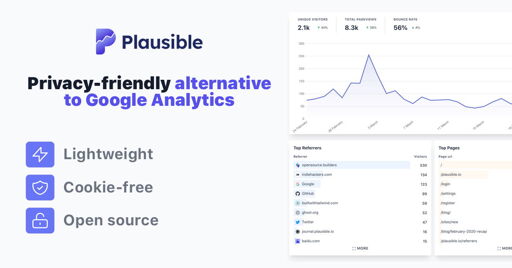- 16 Posts
- 3.06K Comments

 11·8 days ago
11·8 days agoYes. An occupying force that came to help the progressive government that the people didn’t like. Going back to my point - the Afghani people never wanted any of this. They wanted to be left the fuck alone.

 4·8 days ago
4·8 days agoIS he promising universal housing and food? Big if true.
Estonians pay a nearly 50% tax on salaries, we get universal healthcare and education, but not the other stuff you listed. Would definitely be way happier if we got that. Happier than a couple of euros more post-tax salary could make me.

 1·8 days ago
1·8 days agoYou think everyone has the same values as you? Newsflash: Most Afghanis outside the major cities would consider you to be a piece of shit for your values.
USSR and USA tried to change that by force. They failed, because you can control a few cities, but it’s incredibly difficult to control everything in the mountainous countryside. Just give up. Let the people of Afghanistan deal with their own issues instead of forcing western values on them at gunpoint. They’re not really hurting anyone except themselves. Eventually they may be enlightened, but it needs to be grass roots, not bombs and bullets.

 11·8 days ago
11·8 days agoGet the hell out of here with your occupation apologism. The urss ia responsible of 1.5 millions afghan death
Of course it is. Because they were rebelling against what the USSR was trying to bring - a more progressive nation. They did NOT WANT any of what the soviets wanted to force on them (such as, among other things, gender equality). Getting back to my original point - they do NOT WANT TO BE LIKE US. Which is why it was wrong of the USSR to get involved, and wrong of the US to get involved.

 2·9 days ago
2·9 days agoSay the average bus is 10 tons empty and the average car is 2. The fourth power law states that the bus is 625x as much wear on the roads.
It’ll reduce traffic jams, as well as empower people who can’t, or can barely, afford the fare, but road maintenance? Not so sure.
What would help more with the road network maintenance is taxing heavy vehicles. Commercial vehicles could get a bigger threshold and personal vehicles a smaller one.

 12·12 days ago
12·12 days agoThey didn’t care about afghans or democracy that’s why they kept a weak army
The locals didn’t care either. Have you seen those videos of them failing to grasp the concept of jumping jacks in their military drills? Why did afghani commanders make up troops (that they got paid for enlisting)?
The “united snake” as you call it only funded what was already a very popular group with rich history in their region of the country. Obviously I’m not saying that was the right thing to do, I’m just saying that it’s not like they put any more effort into that.
They had a government that was getting increasingly progressive - and they had increasing amounts of trouble keeping the population happy with that, which is why the USSR came and tried to help, but unfortunately a lot of people did not support the PDPA’s initiatives - the women’s rights were a particularly sore spot and had been even before the revolution. Then the US of course famously funded a bunch of hardcore religious freaks (that were essentially seen as good guys who helped people in their area) to counter the soviets, the soviets lost what was already an incredibly difficult campaign to drive progress in an anti-progress land, and then we got Taliban numero uno, yay

 1·12 days ago
1·12 days agoI have not ended up in court. It really depends on what kind of people you deal with.
The overwhelming majority of people would not falsely accuse people of sexual assault. Even of those who would do it, I reckon most would only do it against a high net worth individual. Still, there have been documented cases of false accusations landing people in jail.
While I was being hyperbolic, it’s still food for thought. How DO you prove consent after the fact unless you had a signed contract? Not to mention the fact that consent can be withdrawn DURING intercourse even if there was consent in the beginning. To legally be 100% protected, you’d have to have a contract AND a video recording for every time you have sex. Video recording to prove that consent was not withdrawn after the fact. Contract to get permission for sex and the recording of said sex.
To be clear, I am somewhat kidding, but also not. No, I have never signed contracts, nor recorded having sex. But I HAVE broken the rule of “don’t stick your dick in crazy” and I am moderately scared of what future holds for me - luckily I have 2 years of text conversations proving that it was a consensual relationship (I mean technically not all consensual on my part, she threatened me plenty, just not for sex).
To illustrate how crazy we’re talking about: She essentially whined me into getting her mom airpods and an apple watch as a gift. Since she was an extremely explosive pregnant lady, I agreed. Later when she got into a spat with her mom, she asked for the things back and when she didn’t get them back from her mom, she had me file a police report for theft of these things. Literally the kinda person who falsely accuses everyone of everything to get things. I’m in for a bumpy ride.
Oh and of course if anyone is asking “wait, the relationship only lasted two years and she was pregnant?” - well naturally, she claimed to be on the pill. And a sheet of said pills did appear on a countertop when she started hanging around my place. But I suspect she was just throwing them down the toilet once a day. This was month #1.
 16·18 days ago
16·18 days agoThe CIA knew it was bullshit but Cheney wanted there to be WMDs so chose to believe bullshit artists instead, if John Kiriakou is to be believed. One of the only times in history where CIA might have been the good guys.

 110·19 days ago
110·19 days agoThe slaves didn’t raise their own masters.
The US backed Afghani government lasted less than one day because NOBODY wanted it. Only the Americans did. It’s not part of Afghani culture to send women to school and such. It’s like forcing Americans at gunpoint to eat salad instead of McDonald’s.

 2·19 days ago
2·19 days agoYou must live in a pretty privileged country if you can compare the LGBT rights movement to the anti-slavery movement, a nice “it’s done, let’s go have some beers now” state of things, eh?
It’s certainly not so clear cut in a lot of the world. People are still fighting for their rights and pride is part of it.
If you were in 1850s or 1860s in the US, hell, even some time after that, and your company said “We support black people’s rights”, that would be very political. Morally the right message to put out, but you suddenly lose half your customers and a bunch of idiots want to kill you. Not a smart business move tbh. Now if you said that for years in a row and then decided “We’ll stop our black people’s rights campaign”, now you’re making a whole new political statement, in the exact opposite direction to the original one, and significantly worse. Now you’re also alienating the people who DO agree with what you originally said, and hoping that the people you originally alienated, are coming back. They are not.

 2·19 days ago
2·19 days agoI didn’t say cancelling it was neutral. I was commenting on the people’s opinions that companies should take stances.
Jagex here, clearly already took a stance (they had pride for several years) and then canceled it last minute after already announcing event dates for this year. That’s straight up cowardice on their part. Like I’ve said before - if you’re going to do pride as a company, fucking stick to your guns or you’ll reveal you were never really an ally.

 19·19 days ago
19·19 days agoThese Afghan women married and gave birth to the men ruling over them. They’re at least somewhat complicit in this. They had 20 years to breed a more liberal generation of men, but they did not.
Taliban had such an easy time taking back control because nobody gave a shit.

 2·21 days ago
2·21 days agofake frames
And that’s my main problem with what the industry has become. Nvidia always had sizable jumps generation to generation, in raw performance. They STILL get better raw performance, but now it’s nowhere near impressive enough and they have to add their fake frame technologies into their graphs. Don’t get me wrong, they always had questionable marketing tactics, but now it’s getting even worse.
No idea when I’m replacing my 3060ti, but it won’t be nVidia.

 4·23 days ago
4·23 days agoI first noticed the shift in pop culture around 2003. There was a russian pop singer duo/band called tatu. Terrible music, but they kissed in their one hit wonder music video.
Unrelated rant following:
Back in around 2002-2003 as I started becoming cognitive enough to appreciate different artists and styles, I didn’t have Internet at home (Eastern Europe yay), but we had a couple of non-local TV channels somehow. One being VIVA (the German channel, not the UK one), which at some time of day just played the week’s top 100 hits for Germany, many of which were one hit wonders. Tatu was one of them, though they were more of a 1.5 hit wonder (they’re not gonna get us was half a hit compared to the big one).
This was wonderful, because it got me hearing all kinds of music as a 7 year old that I normally wouldn’t have. Where the hell else was I going to hear The Rasmus - In The Shadows, a bunch of songs by Eminem, and then suddenly Las Ketchup Song? Or for something way less commonly known: Travel Time by Starsplash

 22·23 days ago
22·23 days agoNot the person you replied to, but agree with them to some degree, at least on the fact that any strong political stances are dangerous for a business.
If I ran a service and gay people are celebrating pride on it, that’s none of my business and they can keep on doing whatever they want. Similarly, if conservatives want to throw a straight party without outright saying gay people deserve fewer rights, it’s fucking weird, but it’s their business. The moment anyone advocates for harming someone else, THAT’s when it becomes a problem for me. Goal of a business, in my opinion, is to serve as many people as possible.
I just wouldn’t want to voice support for, or against, anyone’s rights, as a business. It’s horrible that LGBT rights are a politicized issue, sure. But if I ran a business, and there are 30% otherwise quite well-behaved customers who would drop my business because I changed my logo to a rainbow colored one… I just don’t see myself doing that. If I’m providing a service at the best price/quality ratio, it would just mean they drop me to go pay a homophobic business owner even more money for the same service. Does that actually benefit anyone, other than the hypothetical homophobic business owner?
But the worst, most cowardly thing, is supporting LGBT rights and then WITHDRAWING that support. If you’re political already, fucking stick to your beliefs. Don’t abandon them the second the political landscape starts changing.

 41·23 days ago
41·23 days agoNo, it’s definitely political. So was the Civil Rights movement in the US. So was Womens’ suffrage.
Pushing for change is political, even if it’s nearly universally agreed that the particular change is necessary and good. I agree with LGBT rights and as far as I care, they can have a month long pride if they want, it doesn’t in any way chafe my willy. However, I agree with the person you replied to. As a business, ANY stance on ANY political cause risks alienation of some part of your customer base. Doing a 180 on your stance like Jagex did is of course the worst thing you can do, because then you alienate the people who agreed with you, but the others will still remember when you disagreed with them. Once they decided to do pride, they should’ve fucking stuck to it, at least for the year where they already had events scheduled!
If I ran a public-facing business at all, it would have literally no political allegiance or opinions. No stance on LGBT rights, no political donations (not really a huge thing in my country anyway), etc. Just do my thing, provide a great service, make sure my employees and customers are happy, and… The LGBT folks can do whatever they want, I’m just not voicing support for them as a business. Even if I as a person root for equal rights, I just don’t want to take a stance as a business owner. Donations to charities, including LGBT charities, are fine - I just don’t want it to be particularly public. But then I just prefer privacy in these kinds of matters.
 145·23 days ago
145·23 days agoI don’t know much about Iran, but do they have legalized slavery?
It’s debatable, and I’m by no means an expert. But forced marriage is still a thing, where you sell your daughter to a man to clear your debts. If you ignore all the sex slaves, there are still about 600k people living in “modern slavery” conditions. The government isn’t doing anything about it either from what I gather.
So no, it’s not legal the way it is in the US through prison systems, but it is very much a huge issue that isn’t being corrected.
But I mean between the US, Israel and Iran… There really are no good guys. Each of these governments does some real horrible shit.













I like summer. Not when it’s high heat and humidity, but I do like it being light outside after 3:30 PM.